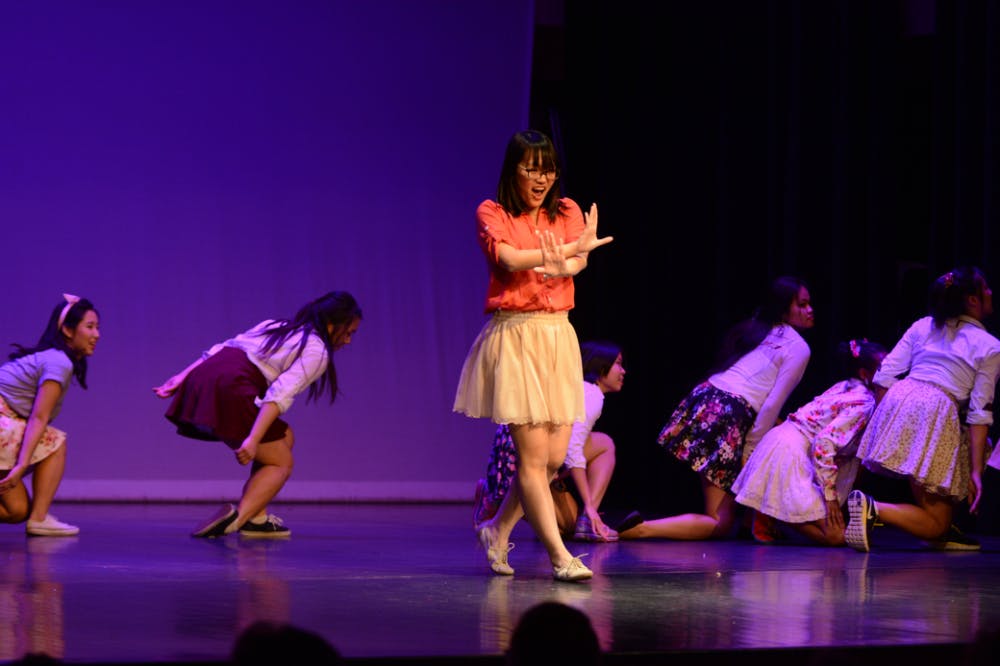On Saturday, Nov. 15 in Wilson Hall, the Middlebury International Students’ Organization (ISO) brought a splash of cultural celebration to campus with their annual cultural show, this year titled “Crossing Borders.”
Students often hear about Middlebury’s “international focus,” and the ISO show is one of the main occasions of celebration, education and collaboration about a variety of cultural perspectives and performance traditions. The ISO’s description of the event reveals their emphasis on cultural appreciation and sharing.
“Middlebury is home to a multitude of identities,” event organizers said. “Although each one is distinct and unique, we bridge diversity and our differences through a celebration of all cultures. With each form of expression, we share a piece of ourselves with others.”
The evening performance, presented to a full audience, gave international and domestic students the opportunity to share their own cultural traditions or to learn and participate in the presentation of traditions different from their own. Members of student cultural organizations including Capoeira, Japanese Club, Ingoma Afropella group, Korean American Student Association, Salsa Club and MiddMasti Southeast Asian Dance were represented in the evening’s 18-piece lineup.
Perhaps the most stirring performances of the evening for this dance appreciator were the large group dance pieces, which especially stood out because of the intercultural engagement and involvement. It was a pleasure to note that quite a few students were in multiple pieces, sharing in many different cultural expressions and showing the inclusive and intercultural communication form that dance can be.
During the traditional Japanese fishermen’s group dance, “Souran Bushi,” the performers moved rhythmically in an upbeat pace that evoked the seaside processing of a morning catch. One of the most striking visuals occurred when the rows of dancers moved in opposing directions like ocean waves.
The African Dance Medley, like many of the evening’s performances, made it difficult to sit still in one’s chair. The dancers performed three different dances, including the Gumboot dance of the mines of South Africa, the Azonto of Ghana and Lipala of the Kenyan Afro-pop band Sauti Sol. The Gumboot dance’s distinct stomping and clapping rhythms were impressively in sync and at times incredibly rapidly executed. As the music for Azonto and Lipala played, one couldn’t help but smile and move along with the beat, reveling in how joyously the dancers performed onstage.
The K-Pop Girls piece gave the audience a glimpse of the popular music trend, a genre of South Korean pop music characterized by large musical groups that often perform synchronized dances to their songs. The playful and energetic unison movements, along with the distinctive K-pop feminine fashion, made for an entertaining perspective on the K-pop culture that emphasizes group dance and garners impressively devoted fan bases in South Korea and the world.
Two selections of Latin dance livened up the evening with stunning partner dancing that left one wishing to join Middlebury’s Salsa Club to learn some of their moves. The flirtatious and fun movements and expressions of the dancers, as well as the characteristically dexterous hip movement, made for a performance that delighted the audience with selections of salsa, merengue and jazz to popular songs still played at Latin dance parties today.
MiddMasti’s performance of an Indian folk dance celebrating the Hindu goddess of female power, Durga, was visually dazzling. Swirling skirts in bright, festive colors captivated the eye as distinct visual shapes made with the arms formed a piece that literally sparkled.
With ten out of the eighteen performances presenting dance from Brazil to Pakistan, it was clear how dance is an important form of expression in many cultures, followed closely by music and poetry, from El Salvador to South Africa, which made up seven of the evening’s pieces. The 18th form of expression was the Fashion Show, featuring national costumes and styles from Ghana to India. Just outside Wilson Hall, photographs of students wearing their national styles bore descriptions of the various traditional garments and invited audience members to contemplate the multiplicity of ways diverse cultures express themselves through clothing.
The ISO cultural show is put on every fall, and this year was made possible through the effort and dedication of the ISO’s three presidents, Adara Wicaksono ’17, Gabbie Santos ’17 and Hiruy Ephrem ’17, as well as the many performers involved. The show exemplified the most positive aspects of intercultural exchange and appreciation, and it was inspiring to witness so many individuals joyfully sharing their distinct cultural identities with the College community.
Walking through the crowd of people just outside the Hall after the performance, one could see and feel the exuberant energy and smiles of performers and audience members alike, who were both enthusiastic about diversity and individuality and united in the delight of the shared experience. This event fostered an essentially important sense of positivity and hope, encouraging us to look around from time to time and acknowledge what an incredible group of people make up this community. Perhaps more importantly, it also allowed students to appreciate all the possibilities for understanding new perspectives and enjoying friendships during our time here at the College.
ISO Celebrates Global Cultures

Comments



